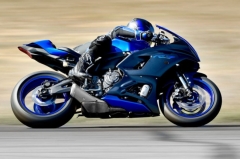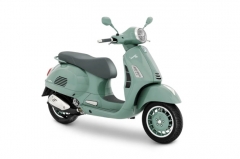
Honda is ramping up its development of an update to its current clutchless transmission systems as a new patent drawing suggests that it seeks to avoid the problems of its previous Hondamatic design, as well as the costliness of its newer dual-clutch transmission (DCT) system seen in the Africa Twin DCT.

Honda is no stranger to clutchless transmission systems or semi-auto’s designed to have the rider manually shift through the gearbox without manually operating the clutch. It first developed its Hondamatic clutchless transmission systems which came out in the 1970s and 1980s introduced with the original CB750 Hondamatic. It has a two-speed system, with a low gear for slow speed situations and a high gear for situations when speed would pick up. However, it had a reputation for being underpowered with its dismal power output. Through the years, Honda has never stopped the development of a clutchless transmission system.
The new patent shows a semi-auto shifting arrangement, similar to that of the Hondamatic design which would have the rider manually shifting through the gearbox, but without the operation of a clutch. Instead, a computerized “smart clutch”, that works similarly to a quick-shifter, would cut the power when it was time to shift. The rider would still select the gears just as he would with traditional foot controls, but the bike’s computerized clutch system would make all the necessary calculations and take care of the clutch function.
The drawings suggest that the system is attached to a motorcycle with a standard six-speed gearbox. In comparison, Honda’s current DCT design, which allows having a paddle shifter on the handlebars for clicking through the gears in the event the rider decides to bypass its automatic shifting function, it however operates in a more complex type of system. This new patent design is much simpler than the DCT arrangement which makes it more reliable, affordable, and feasible for actual application to motorcycles. If it actually turns out to be a quick-shifter designed for motorcycles, its increase in cost would be more negligible over a standard clutch than that of its current DCT system.
At this point in time, it’s still difficult to say whether or not this type of technology would make it out in the market with Honda’s foreseeable line up of future motorcycles. The only thing it tells us now is that Honda seems to want to broaden its reach of people getting into motorcycles more by simplifying its operation — perhaps with a quick-shifter.
Tagged Under
Related Articles
-
Details on the Honda Rebel 1100 revealed by its patents / News
Patents of the upcoming Honda Rebel 1100 reveal much more details on the new big-bore cruiser’s engine, suspension, and other components.
-
Honda patents a new adventure bike with a supercharged engine / News
Honda’s latest patent filings reveal a supercharged engine on an adventure motorcycle that could carry on to a new range of bikes if proven successful.
-
Honda files a patent for an electric-powered Neo-Sports Café motorcycle / News
Honda’s latest patent filings show a new electric motorcycle based on its existing CB125R Neo-Sports Café motorcycle — and it could be closer to its finishing stages.
-
Honda’s new patent reveals it's working on a new, sleek sports scooter / News
Honda’s patent for a futuristic-looking sports scooter from its Italian design studio emerges online looking nothing like the rest of its scooter lineup.
-
Honda’s future CRF450R patent emerges online / News
Honda’s next-generation CRF450R patent reveals an exhaust system upgrade, a repositioned radiator, and a new hydraulic clutch system.
Latest News
-
2026 Kawasaki Z650 S gets more aggressive styling and premium tech / News
The 2026 Kawasaki Z650 S adds new styling, updated tech, and the same dependable 649cc engine loved by middleweight riders worldwide.
-
The 2026 Yamaha R7 has been updated with a smarter CP2 engine and modern tech / News
The 2026 Yamaha R7 gets a Euro 5+ compliant CP2 engine with new electronics and modern tech, expected to arrive in the Philippines after its EICMA debut.
-
Vespa updates the Primavera and Sprint S ahead of its 80th anniversary / News
New brakes, wheels, electronics, and a special Verde Pastello series lead the brand into 2026.








